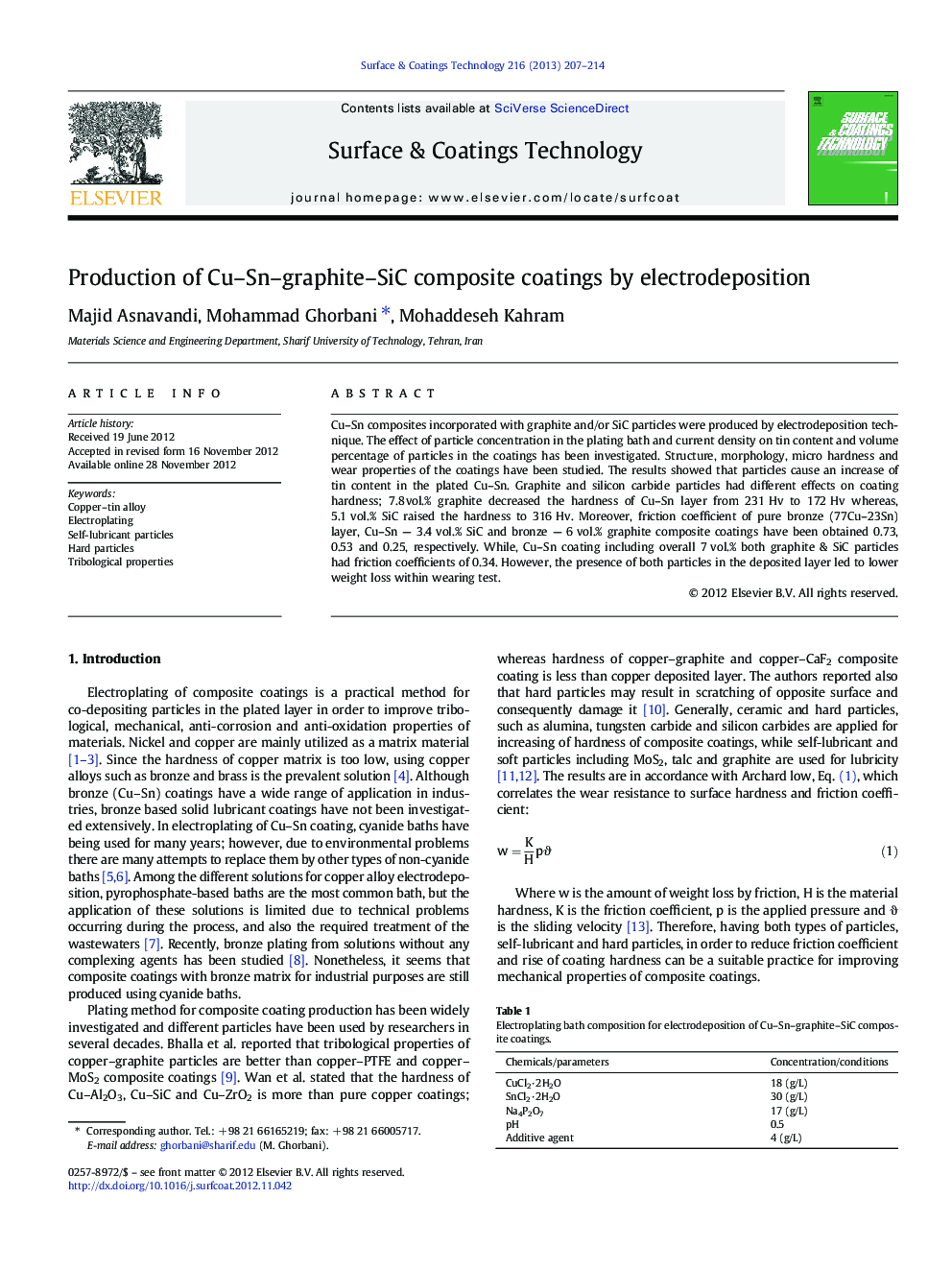| Article ID | Journal | Published Year | Pages | File Type |
|---|---|---|---|---|
| 1658213 | Surface and Coatings Technology | 2013 | 8 Pages |
Cu–Sn composites incorporated with graphite and/or SiC particles were produced by electrodeposition technique. The effect of particle concentration in the plating bath and current density on tin content and volume percentage of particles in the coatings has been investigated. Structure, morphology, micro hardness and wear properties of the coatings have been studied. The results showed that particles cause an increase of tin content in the plated Cu–Sn. Graphite and silicon carbide particles had different effects on coating hardness; 7.8 vol.% graphite decreased the hardness of Cu–Sn layer from 231 Hv to 172 Hv whereas, 5.1 vol.% SiC raised the hardness to 316 Hv. Moreover, friction coefficient of pure bronze (77Cu–23Sn) layer, Cu–Sn — 3.4 vol.% SiC and bronze — 6 vol.% graphite composite coatings have been obtained 0.73, 0.53 and 0.25, respectively. While, Cu–Sn coating including overall 7 vol.% both graphite & SiC particles had friction coefficients of 0.34. However, the presence of both particles in the deposited layer led to lower weight loss within wearing test.
► A metal matrix composite coating with two types of particles was deposited via electroplating method, successfully. ► Cyanide bath was not used for bronze electroplating. ► Long life of deposited layers has been achieved by co-deposition of both hard and self-lubricant particles.
